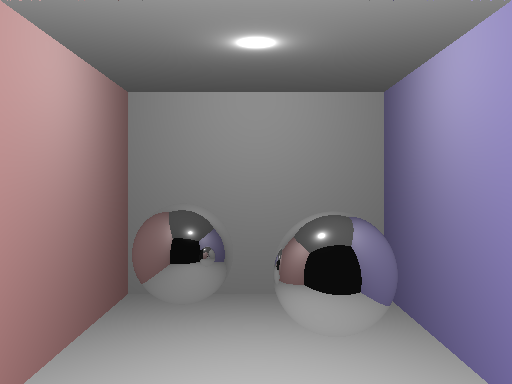asg00.tar.gz
tarball, gunzip it, and compile the ray tracer with the
Makefile provided:
gunzip asg00.tar.gz
tar xvf asg00.tar
cd asg00
make clean
make
./main cbox.txt > cbox.ppm
cbox.ppm image with your
favorite image viewer (e.g., xv), it should
look like the one here, but larger:

ray_t object
with the following private data members:
double dis; // distance
vec_t pos; // position
vec_t dir; // direction
void trace(model_t&,rgb_t<double>&,object_t*);
ray_t class.
ray.h and ray.cpp).
main() subroutine to "spawn a ray"
for each position and direction calculated and then
call this ray's trace method to calculate
the resultant color at each given pixel. This is
usually done via instantiation of a new ray object, e.g.,
// spawn new ray; analogous to C's malloc()
ray = new ray_t(pos,dir);
// trace ray (note the use of the -> operator, not the .)
ray->trace(model,color,NULL);
// delete ray, analogous to C's free()
delete ray;
ray_trace() function from
main.cpp.
cbox.txt
file.